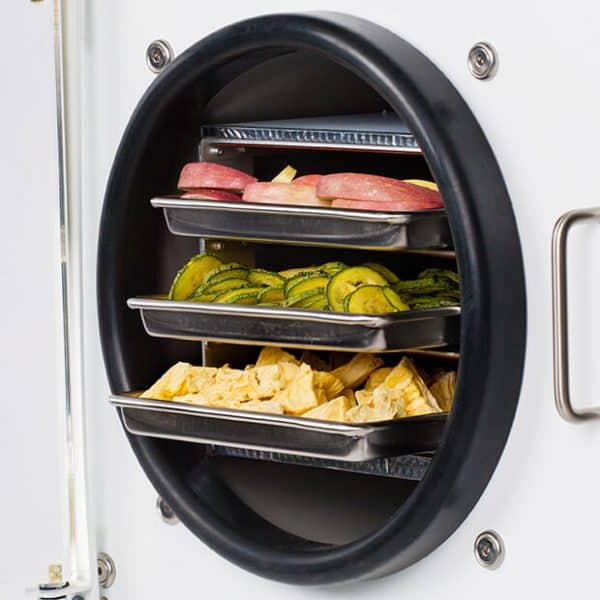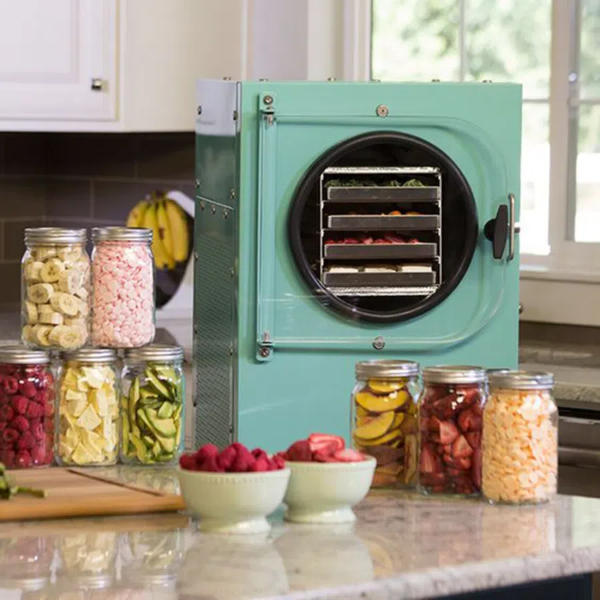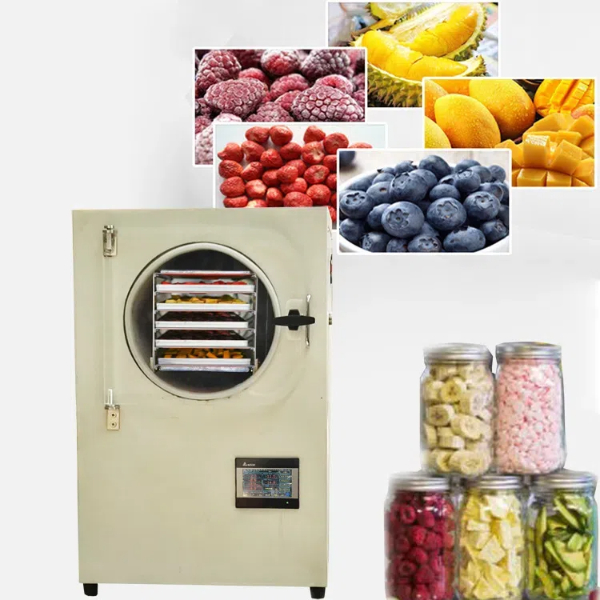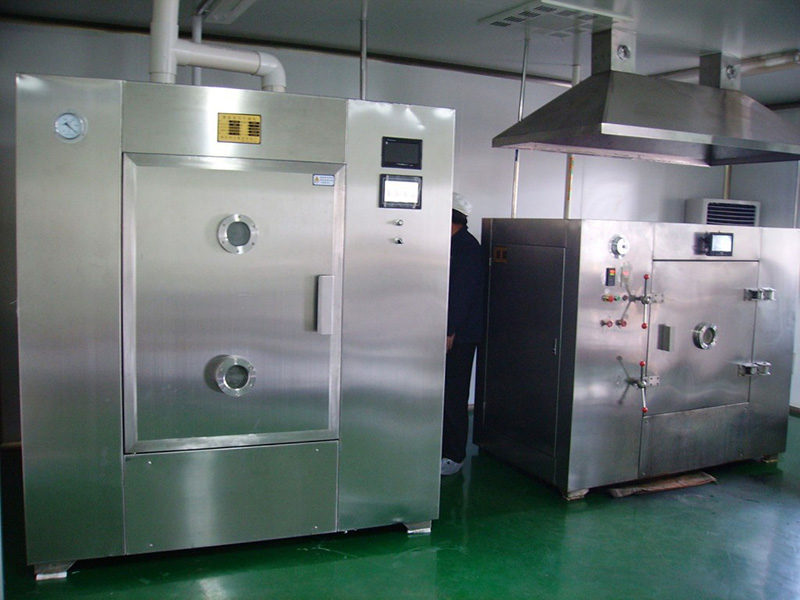
Content Menu
● Introduction to Home Freeze Drying
● Understanding the Freeze Drying Process
● Benefits of Using a Food Freeze Drying Machine at Home
● Choosing the Right Food Freeze Drying Machine for Home Use
>> Popular Home Freeze Dryer Models
● Setting Up Your Home Freeze Dryer
● Preparing Food for Freeze Drying
● The Freeze Drying Process: Step-by-Step
● Packaging and Storing Freeze-Dried Foods
● Rehydrating and Using Freeze-Dried Foods
● Maintenance and Care of Your Home Freeze Dryer
● Creative Uses for Your Home Freeze Dryer
● Cost Considerations and Return on Investment
● Environmental Impact of Home Freeze Drying
● Comparing Freeze Drying to Other Preservation Methods
● Tips for Successful Home Freeze Drying
● Conclusion
● Frequently Asked Questions
>> 1. How long does the freeze drying process take?
>> 2. Can all types of food be freeze-dried?
>> 3. How much electricity does a home freeze dryer use?
>> 4. How long do freeze-dried foods last?
>> 5. Is it safe to freeze-dry raw meat?
Introduction to Home Freeze Drying
Freeze drying, also known as lyophilization, is a cutting-edge food preservation method that has gained significant popularity among home users in recent years. This process involves removing moisture from food while preserving its nutritional value, flavor, and texture. With the advent of food freeze drying machines for home use, individuals can now enjoy the benefits of this technology in their own kitchens.
Understanding the Freeze Drying Process
The freeze drying process consists of three main stages:
1. Freezing: The food is rapidly frozen to temperatures below -30°F (-34°C).
2. Primary drying: A vacuum is created, and the frozen water in the food sublimates directly from ice to vapor.
3. Secondary drying: Any remaining moisture is removed through desorption.
This process results in food that retains up to 97% of its nutritional value and can be stored for up to 25 years when properly packaged.
Benefits of Using a Food Freeze Drying Machine at Home
1. Long-term food storage
2. Preservation of nutritional value
3. Retention of flavor and texture
4. Reduced food waste
5. Cost savings on long-term food purchases
6. Customization of preserved foods
7. Emergency preparedness
Choosing the Right Food Freeze Drying Machine for Home Use
When selecting a freeze dryer for home use, consider the following factors:
1. Size and capacity
2. Energy efficiency
3. Ease of use and maintenance
4. Noise level
5. Warranty and customer support
Popular Home Freeze Dryer Models
1. Harvest Right Freeze Dryer
2. Labconco FreeZone Freeze Dry System
3. Magic Mill Commercial Food Dehydrator
Setting Up Your Home Freeze Dryer
1. Choose a suitable location with proper ventilation
2. Ensure a dedicated electrical circuit
3. Familiarize yourself with the machine's components
4. Perform initial cleaning and sanitization
Preparing Food for Freeze Drying
1. Select fresh, high-quality ingredients2. Clean and prepare food as you would for immediate consumption
3. Cut food into uniform pieces for even drying
4. Pre-freeze foods with high water content
5. Arrange food on trays with proper spacing

The Freeze Drying Process: Step-by-Step
1. Load prepared food trays into the freeze dryer
2. Start the freeze drying cycle
3. Monitor the process (most machines are automated)
4. Allow for proper cooling and defrosting
5. Remove dried food and package for storage
Packaging and Storing Freeze-Dried Foods
1. Use moisture-proof packaging (e.g., Mylar bags)
2. Add oxygen absorbers to extend shelf life
3. Seal packages properly using heat sealers
4. Label packages with contents and date
5. Store in a cool, dry place away from direct sunlight
Rehydrating and Using Freeze-Dried Foods
1. Add warm water to rehydrate (typically 1:1 ratio)
2. Allow food to absorb water for 5-20 minutes
3. Use in recipes as you would fresh ingredients
4. Experiment with different rehydration techniques for optimal results
Maintenance and Care of Your Home Freeze Dryer
1. Clean trays and interior after each use
2. Regularly check and replace vacuum pump oil
3. Inspect seals and gaskets for wear
4. Defrost and drain the unit as needed
5. Follow manufacturer's guidelines for long-term maintenance
Creative Uses for Your Home Freeze Dryer
1. Make lightweight camping meals
2. Create unique snacks and treats
3. Preserve garden harvests
4. Prepare emergency food kits
5. Develop new recipes and food products
Cost Considerations and Return on Investment
While the initial investment in a food freeze drying machine for home use can be significant, many users find that the long-term benefits outweigh the costs. Factors to consider include:
1. Reduced food waste
2. Savings on bulk food purchases
3. Ability to preserve seasonal produce
4. Potential for small business opportunities

Environmental Impact of Home Freeze Drying
1. Reduced food waste
2. Lower carbon footprint compared to commercial freeze-dried products
3. Energy consumption considerations
4. Sustainable packaging options
Comparing Freeze Drying to Other Preservation Methods
1. Dehydration
2. Canning
3. Freezing
4. Smoking and curing
Each method has its pros and cons, but freeze drying often stands out for its ability to preserve nutritional value and extend shelf life.
Tips for Successful Home Freeze Drying
1. Start with simple foods and gradually experiment
2. Keep detailed records of your freeze drying sessions
3. Join online communities for support and recipe ideas
4. Regularly maintain your machine for optimal performance
5. Invest in quality packaging materials for long-term storage
Conclusion
Food freeze drying machines for home use offer an exciting opportunity for individuals to take control of their food preservation and storage. With proper use and maintenance, these machines can provide long-lasting, nutritious, and delicious food for years to come.

Frequently Asked Questions
1. How long does the freeze drying process take?
Answer: The freeze drying process typically takes between 20 to 40 hours, depending on the type and quantity of food being processed. Factors such as water content, thickness of the food, and the specific model of the freeze dryer can affect the duration.
2. Can all types of food be freeze-dried?
Answer: While most foods can be freeze-dried, some are better suited for the process than others. Foods with high fat content, such as avocados or fatty meats, may not freeze-dry well. However, fruits, vegetables, lean meats, dairy products, and even entire meals can be successfully freeze-dried.
3. How much electricity does a home freeze dryer use?
Answer: The electricity consumption of a home freeze dryer varies depending on the model and size. On average, a standard home freeze dryer may use between 1-3 kWh per hour during operation. This translates to approximately $1-$3 per day in electricity costs, depending on your local electricity rates.
4. How long do freeze-dried foods last?
Answer: When properly packaged and stored, freeze-dried foods can last up to 25 years or more. However, this longevity depends on factors such as the type of food, packaging quality, and storage conditions. It's essential to use appropriate packaging materials, such as Mylar bags with oxygen absorbers, and store the food in a cool, dry place.
5. Is it safe to freeze-dry raw meat?
Answer: Yes, it is safe to freeze-dry raw meat. The process removes moisture, which inhibits bacterial growth. However, it's crucial to handle raw meat safely before and after freeze-drying. Always use proper food safety practices, such as cleaning surfaces and utensils thoroughly, and store freeze-dried raw meat in appropriate packaging. When rehydrating, treat it as you would fresh raw meat in terms of cooking and handling.












